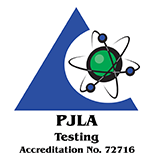ACRYLAMIDE
TESTING
Acrylamide is a white crystalline solid, water soluble and known carcinogen.
Acrylamide can form in some foods during high-temperature cooking processes, such as frying, roasting, and baking. Foods that include Sugars and/or the amino acid Asparagine are the main contributors.
Murray-Brown Laboratories uses the most sophisticated instrumentation (UPLC/QQQ) and current FDA Method to determine Acrylamide in Food. This method is very accurate, precise and not subject to interferences with a quantitation limit of 10 µg/kg (PPB).
Foods contributing the most to these exposures will vary between different countries and according to the daily diet. In the US, the foods contributing the largest amount to the daily consumption include French fries (chips), potato chips (crisps), cereal products (breakfast cereal, cookies, toast, pies and cakes, crackers and bread), and brewed coffee (DiNovi 2006). In many European countries, potato products (French fries, crisps and comparable products), bread (toast and soft bread) and coffee also are major contributors.
FDA and Codex have yet to establish action limits while the EPA includes a recommended limit of “zero” which is a meaningless and non-actionable term that does not take into account current routinely achievable limits of detection.
California Prop 65 does offer limits of 0.2 ug/day (NSRL) No Significant Risk Level and 140 ug/Day (MADL) Maximum Allowable Dose Level. US EPA and FDA estimates the current daily intake to be around 0.4 ug per day.
California has litigated several food companies such as fried chicken and chip companies negotiating reduction in acrylamide from 7000-8000 PPB to <500 PPB.
Platform: UPLC/MS/MS (FDA)
Limit of Detection: 10 PPB
Sample Size: 10 grams minimum
Days to Result: 5
Cost: $150
Action Limits set by California Prop 65:
- NSRL 0.2 µg/Day
- MADL 140 µg/day


